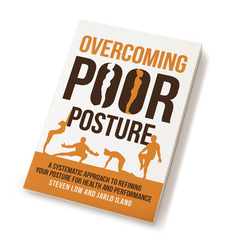|
SEARCH My Blog (Opens in new tab)
Hurting your back is traumatic - physically and mentally
When it happened to me it was like a bolt of lightning striking my lower back. In the midst of some intensive exercise I stopped, ironically, to move a small dumbbell away from my feet to avoid the possibly of tripping on it. I leant over, reached down, and almost at the point of giving it a gentle flick to the right with my fingers a shrieking pain immobilised me.
I was both dumbfounded and in agony. Putting weight on my left leg hurt, and even standing up straight hurt. My mind was racing. Your're only as strong as your back.
One of my instructors was fond of saying "you're only as strong as your back", and my back felt like it was permanently out of action. Was I ever going to be able to exercise again? Was this going to be what life was like for the rest of my life? Had I pinched a nerve, would it always hurt? I was now sweating more from fear than from pain!
At home that night (a Monday), my back was extremely painful. I could only think "ice pack every 2 hours", and rub in some anti-inflammatory gel. Between my racing mind and the pain I didn’t sleep well. Getting out of bed - in a way that wasn't excruciating - required me to roll onto my tummy and then edge to the side of the bed, lower my knees to the floor and then push up from the bed to stand up. I took the day off work because most movement, and sitting, hurt.
At 4pm I saw the doctor, and he reassured me that it was not a pinched nerve or sciatica. He said that often people pull their muscles and strain their ligaments in the lower back just when rolling over in bed. He prescribed strong pain killers - "these will blur your vision" - and said it will get better. At 5pm I was able to see the physiotherapist who confirmed the doctor's diagnosis, eased the main spasmed muscles, gave me some exercises, and said "3 weeks".
The exercises were simple ones that, surprisingly, I already do as part of my warm-down stretches after every gym session - to be done 3 times per day:
That night, after the pain killers kicked in and the diagnoses sunk in, I slept like a baby. I woke up the next morning feeling like I had been given my life back, despite still having to roll over on my tummy and knees lowered down to the floor in order to get out of bed. The pain was there but dull and not sharp. I managed a long day at work that stretched into 10pm at night hosting visiting clients - to my amazement. I walked every day - did the exercises, added in a kneeling Leg Kick Back, and by Friday could get my leg up enough to get for a gentle ride on my bike. I was really feeling amazed. So I decided to go to gym Saturday morning and experiment my way through a few exercises that I thought would help. At gym what really surprised me most was what I could do, rather than what I could not do. Here's what I found I could do without aggravation:
That was enough, and I added in some arched hanging. Later in the day I went for a walk. By Sunday - 7 days after the event - I felt not only optimistic, but also quite astounded by the progress. While at the gym on Saturday a few people told me of friends who had similarly injured their back, and they had had long recoveries and avoided much movement or exercise. Of course everyone is different and needs to take professional advice, but it seems that avoiding movement and exercise is often not the best way to work your way back. If you are already exercising regularly and have developed good body awareness then you should be able to "feel" your way through a modified exercise program to rebuild your back strength. I hope that this never happens to you. If it does then please take seriously the opportunity to keep moving and keep exercising in a safe supportive way to get back into shape. Thoughts on sore back and exercising I'm lucky, my recovery is processing well. It made me think of how many people use a sore back as a reason not to exercise. While every case is different there is one sure thing - ultimately not exercising will ensure things get worse. With the clearance of your appropriate health professional are you:
Latest: get your free customised fitness plan designed uniquely for you.
|
ChoicesSince I was diagnosed at 50 with Type 2 diabetes I've been learning how to do bone-building fitness training which lowers my age. You can too. It's your choice. Walter Categories
All
Archives
May 2023
|


 RSS Feed
RSS Feed



